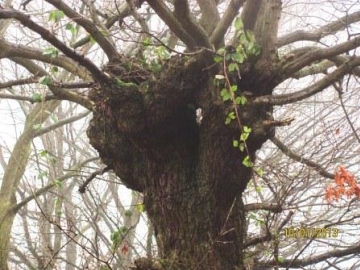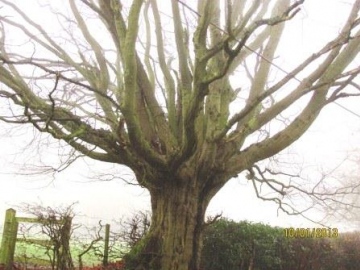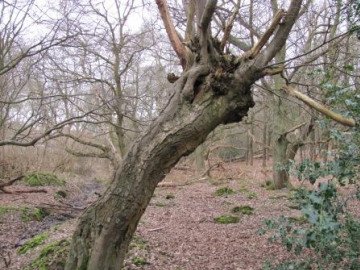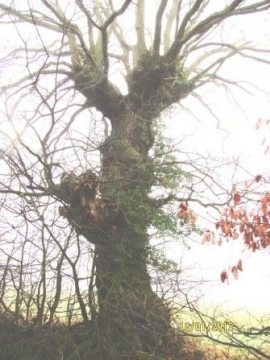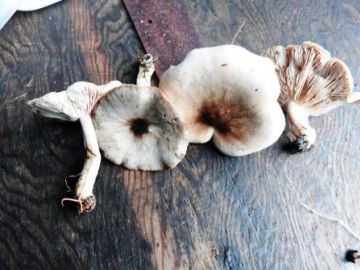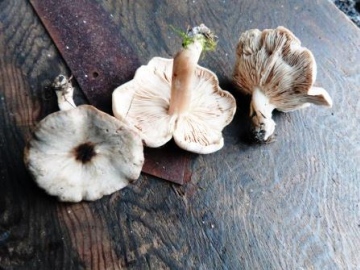also brilliant for invertebrates and other wildlife but, sadly, as they are no longer cropped (the 1939-45 war seems to be the last time the wood was harvested on a large scale) they are all becoming top heavy and one by one succumbing to winter gales. A prime example is this mighty roadside Hornbeam, also
photographed at Beggar Hill - you can almost hear it groaning under the strain! They would never have been allowed to grow to this size when they were being actively harvested; a more typical example
would have been this Hornbeam pollard on Mill Green Common. At one time this was managed as a wood pasture and there is a record from the early 1800s of 800 pollards being 'falled' (or cropped) one year. The Common is only around 60 acres and you would never have got eight hundred of the larger trees to fit in! The density at Mill Green was nothing compared to some other commons and Mark Hanson tells me that there are records of 700 pollards to the acre at Epping! This tree is one of the very few left on the Common from the old days; most of it is now covered by secondary woodland, the sad fate of many of those in Essex. My final tree is a so-called 'giraffe' pollard, named for obvious reasons. This one too was photographed at Beggar Hill. I'm not sure why they were cropped so high as giraffes are scarce locally
and it must have made them very hard to harvest, but they are not uncommon in the area.
It remained relatively mild for much of the week and on the 9th I was able to sit on a commemorative bench along the seawall at Blue House, soaking up the warm winter sunshine for over an hour. Three days later found me huddled on the seawall at St Lawrence Bay for five hours, counting waders, my body encased in the heaviest of my winter coats and padded trousers, an EWT woolly hat pushed down over my ears and my hands struggling to stay warm inside two pairs of gloves. Felt like a knight in medieval armour and was just about as mobile but this paraphenalia did keep out the worst of the easterly wind.
Remarkably, despite the cold a small group of fungi were flourishing among the grass near where I sat. They later keyed out as the Smoky Cavalier Melanoleuca excissa, a member of a family with white gills and warty spores. When fresh picked the caps were darker than the ones seen here but this species is hygrophanous (as we say in the trade), that is, drying paler with age. I hope to add these to the Club collection at Wat Tyler.



















